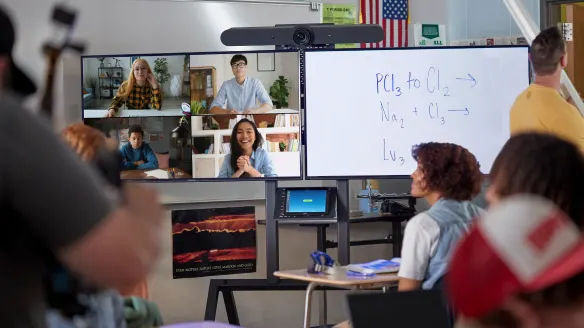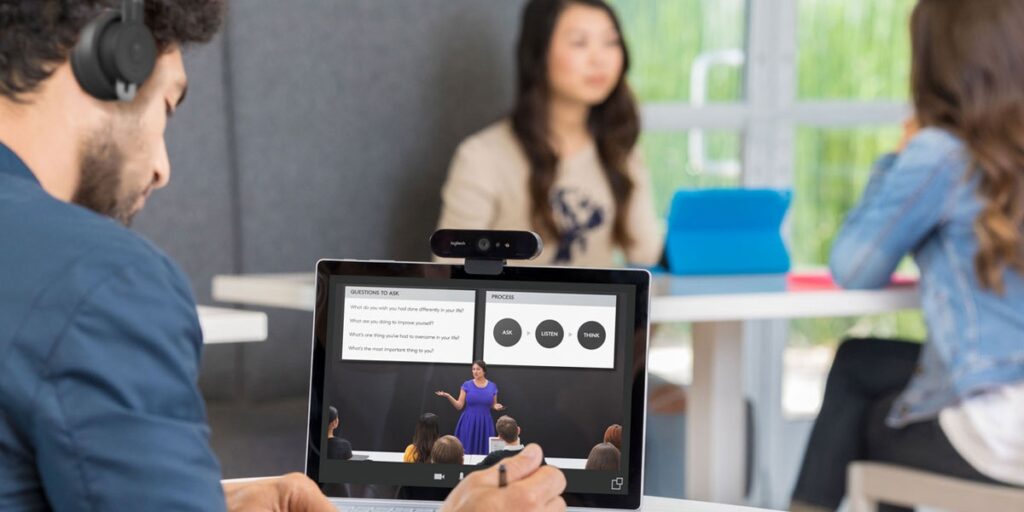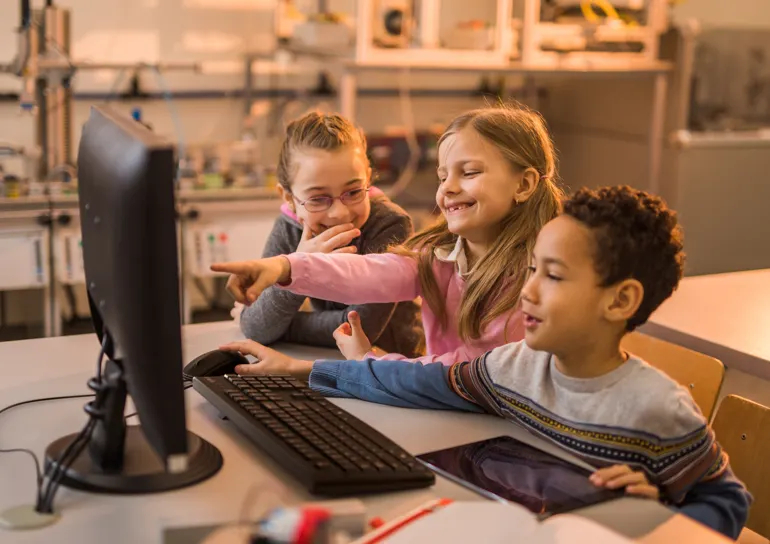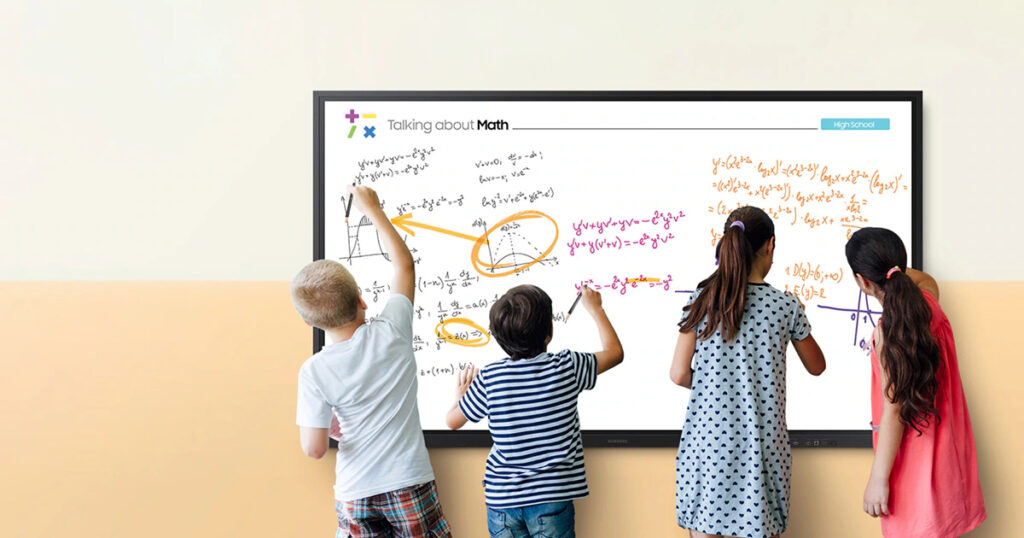We will discuss how the integration of technology in the education sector can be executed, with its benefits and drawbacks.
After penetrating our offices, technologies are now entering the classrooms. In this ever-booming world technologies and visual inputs are essential to today’s learning environment. Education is not and should not be limited to a chalkboard anymore.
We can not expect children and students to rely on obsolete appliances when they are faced with modern innovation on a daily basis. Teaching techniques should rely on simplified yet efficient lesson learning.
How will technology change education in the future?

Modern technologies intend to improve your daily life at home or school. They are ergonomically designed to enrich the learning and teaching experience of students. With clever features such as enhanced security and data protection, your privacy is guaranteed. In addition, hybrid teaching aims to increase student engagement via tablet applications, whiteboards with touchscreens, and dual pens. This will allow students to develop new skills in creating different projects. Growing their creative aptitudes in designing and drawing for arts, architecture, engineering purposes, and more will allow them to discover what they are talented at and the fields they might want to explore more broadly.
Alternatively, students can easily work as a team on adapted platforms. This will improve teamwork and cooperation at school, and help create more synergies. Groupwork can easily be centralised on a shared platform to be accessible to all group members at any time. Team members will be able to collaborate remotely and share information and ideas digitally.
How can technology improve education? What are the benefits of integrating technology into education?
- Improved communication and collaboration: students and teachers can communicate at after-school times and interact during class.
- Immersive learning: with platforms such as polls, quizzes, and tests all online to do in and outside the classroom. This will simplify correction and save teachers time. Thanks to an automated system, make quizzes more fun for students to do on a tablet, and save paper.
- Better engagement and motivation: make children excited about learning again! Introducing more creative, collaborative, and reflecting tasks will not only develop brain agility but make learning more entertaining.
- More flexibility: students and teachers will be able to access the classroom even remotely. The goal is not to make learning all online but to have the option in case of illness.
- Unlimited resource access: with access to the internet and numerous platforms, students will be able to find the answer to their questions. This will allow them to stay more up-to-date on current trends and conduct research on various topics.
- Gamification: gamification intends to increase participation by adding game mechanics into non-gaming environments. Game mechanics refer to similar or game-like experiences to promote student engagement and competition to make learning and working more enjoyable. Classroom exercises such as learning games, badges, and rewards will increase students’ engagement.
- Track progress: monitoring student progress will boost their motivation.
How has technology benefited education?
The introduction of technology in education contributed to reducing costs for schools by allowing students to have unlimited access to learning material online. This did not used to be the case when everything was limited to pen and paper. This will not only increase and facilitate education access and reduce the gaps in teaching disparities.

Modern tools allow for more connectivity and community building. Students can engage with one another, and their teachers, and have access to learning tools. Schools developed their online materials during the pandemic. Interactions and classroom meetings are made easier thanks to the expansion of conferencing platforms. When attending a class online, you will have the option to create breakout rooms, and polls, and ask questions through the chat.
Education technologies are ways to improve education digitally. Artificial Intelligence (AI) has and will continue to grow in the learning sector. AI is now being added to modern devices, such as webcams and screens to detect human presence, auto frame, track participants, etc. AI can also be used in education as a way to simplify the workload. By grading and supporting teachers as well as students through individualized learning, technology will make your daily life easier.
Recently introduced, ChatGPT is a state-of-the-art natural language processing model used to answer questions. Created by OpenAI, this automated AI can respond without being explicitly told what the answer is using its intellect. This new AI model will be resourceful for the educational system.
How to use technology in education?

There are numerous possibilities for adding technologies to your classroom. The first one that comes to mind when we talk about setting new technologies in the classroom is interactive screens and whiteboards. From pupils to students, whiteboards have always been a must. They are the easiest way of writing for everyone to see. The touch screen feature on connected screens will make teaching more entertaining and interactive for students.
In addition, document cameras are convenient for displaying your documents on a screen. They are particularly helpful for larger rooms but also avoid scanning or printing a document for a whole classroom. These are tools for the teachers to use in the classroom.

With portable solutions, such as tablets, students can also use technologies in the classroom and bring them home. This will empower them to engage with their studies anywhere. Chromebooks also allow students to work at home or in the classroom, introducing them to internet searches. PCs and personal laptops come with headsets, webcam, keyboard, and mouse so that students can participate in meetings when working remotely or on the go. Presentation systems will allow you to share your files with your class.
Disadvantages of technology in education
New technologies also come with disadvantages. Although technologies will save costs in the future, the price of setting them up is still significant. You need to bear in mind that unfortunately, not all schools have financial access to setting up new devices for their classroom. Again, not all schools have the management and training required to install some devices. Finally, we do not want students to become reliant on technology. There should still be a limit to how it should be used. For instance, we still want students to be able to reflect and be critical of the information they are receiving. Their work should remain their own without the help of AI and modern technologies.
Why is technology important in education?
As we have discussed, technology will bring new solutions to improve the education environment for both students and teachers. They also bring new opportunities, new ways of learning and teaching, additional software, and the latest artificial intelligence.
In the end, education evolves as most sectors do when new technologies are discovered. It comes down to how it will be received and how to make the transfer so that we do not disrupt the whole education system. Schools should remain careful that the technologies used are only there to improve the teaching and learning experience and not replace it.
